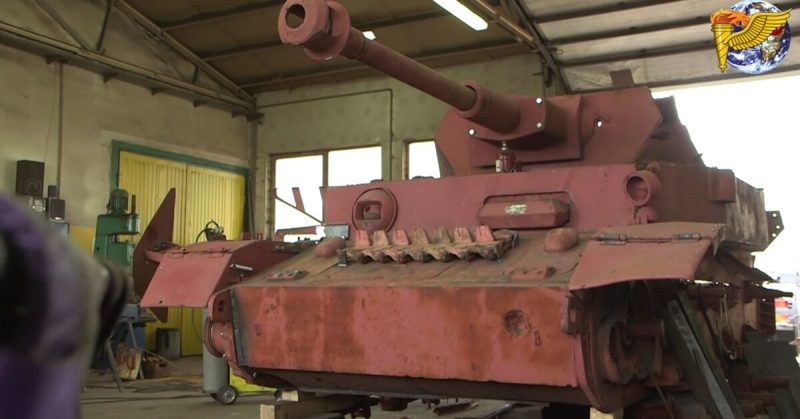The Panzerkampfwagen IV, also known as the PzKpfw IV, was a medium tank produced for the German military in the late 1930’s. It was used extensively throughout the Second World War, and during its time more than 8000 of these tanks were built. From Finland to Syria, these incredible armored vehicles have seen action in numerous nations and several different conflicts.
This model was the brainchild of Heinz Guderian, a German military general and armored warfare theorist. He believed that his design would be an ideal support tank to use against anti-tank guns, as well as being effective against any fortifications held by the enemy.
The tank would require a five man crew; a driver, a radio operator, a tank commander, a gunner, and a loader.
This version of the Panzer proved to be extremely popular, with the thousands of units produced bearing testament to that fact. As well as being an excellent war machine in its own right, the Germans used this tank as a base for many of their other vehicles, especially those that were designed for combat. Examples of these included the Jagdpanzer IV tank destroyer, the Brummbar self-propelled gun, and the Sturmgeschutz IV Assault Gun.
The Panzer IV was the only German tank that was to remain in production continuously throughout the Second World War. It made up 30% of the tank strength of the Wehrmacht. In fact, this iconic vehicle saw action in every theater of the conflict where Germany was engaged.
The remarkable longevity of Heinz Guderian’s design is due in part to the extensive upgrades and remodeling work that the tank benefited from throughout its time in service. As the Second World War progressed, the German military faced new threats and dangers on the battlefield, as their enemies’ technology grew increasingly more advanced. To counter this, engineers worked hard to improve the weaponry and armor protection on the Panzer IV.
These upgrades and alterations were not always advantageous to the tank, however; as time went on and Germany found itself struggling to repair and replace vehicles and equipment fast enough, they began focusing on simplifying the designs. This allowed the tanks to move slightly faster and shortened the time they took to build and repair, but it also decreased their efficiency on the battlefield.
A total of 8,553 Panzer IV tanks were produced during the Second World War. The only other armored vehicle that was more popular than this – of those favored by the Axis Powers, at least – was the StuG III assault gun/tank destroyer, of which 10,086 units were produced.
Eventually the Panzer IV was superseded by the Panther medium tank. This new model was designed and produced to combat the rising threat of Soviet T-34’s on the Eastern Front, and as a result its predecessor became slightly less important in the war effort. However, they were not replaced entirely, and in fact the Panzer IV remained an active and valued asset right up until Germany was defeated.
The Panzer IV was the most exported German tank in the Second World War. Throughout the conflict approximately 297 Panzer IVs were shipped out to allies of Germany. Following the end of the war, the Syrian government managed to get a hold of the Panzer IVs that France had captured, and these remaining vehicles were put to use during the Six Day War, during 1967.
In this video, viewers can see one of these spectacular machines being carefully restored by a team of experts. It is an enormous task, but well worth the patience and expertise it demands. As one of Axis Powers’ most mass produced armored vehicles, the Panzer IV is an essential part of the Second World War’s military history, and of the role Germany played throughout it.
Our special thanks to Dokuman.pl for creating this video, please follow them on Facebook for more awesome videos.
https://www.youtube.com/watch?v=RliwmN8lM4Y
